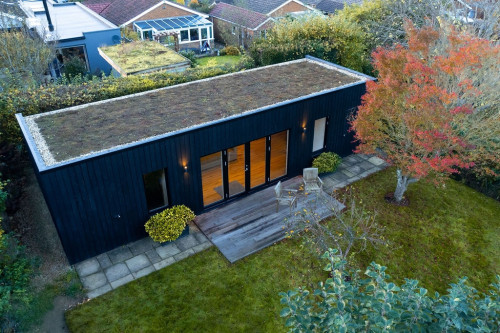How Can I, as a Client, Be Kind to the Planet on a Budget?
19 November 2024 by Russell McCourty
Old browser alert! We have detected you are using a pretty old browser. This website uses cool features that can't be supported by your browser.
If we let you see the website it would look all weird and broken, nobody wants that!
Update your browser!19 November 2024 by Russell McCourty

When it comes to building or renovating a space, eco-friendly choices can sometimes feel overwhelming and expensive. At George & James Architects, we know that designing sustainably doesn’t have to break the bank.
As a Chartered Architectural Technologist, a need to be environmentally conscious has been drummed in to me through every aspect of my formative years - from recycling drinks cans on Blue Peter through intensive scientific architectural training, all leading to the pleasure of designing some of the most environmentally friendly homes in the South East.
So what can you, as a client, consider as creative and cost-effective ways to keep your project environmentally kind without compromising quality or style? Here are our top tips for creating a sustainable space on a budget.

While it’s easy to focus on the immediate costs, sustainability often pays off most when you take a long-term view. Choose materials, designs, and fixtures that are built to last. This reduces the need for replacements and repairs, which ultimately lowers costs and reduces your environmental footprint. When you prioritise durability
and timeless design, you’re investing in a space that’s both wallet- and planet- friendly for years to come.
One of the simplest ways to cut down on energy usage is by harnessing the power of natural light. When planning the layout and orientation of your home or workspace, prioritise the way your glazing faces. A well-placed window can reduce your need for electric lighting during the day and even help with heating during colder months. Plus, natural light has been shown to improve mood and productivity, so we use it to combat Sick Building Syndrome.
Insulation may not be as visible or exciting as a new countertop, but it’s a key player in making your space more energy-efficient. High-quality insulation reduces the amount of energy needed to heat or cool your home, keeping utility bills low and minimising your carbon footprint. Proper insulation in walls, floors, and ceilings is a great budget-conscious move, as it saves you money in the long run while being gentle on the environment. In the industry, we refer to this as the “fabric first” approach, as we think of the fabric of a building’s structure, well before simply shoehorning in an air source heat pump as an afterthought to a building that doesn’t need it!
Sustainable doesn’t have to mean brand new. Reclaimed wood, recycled glass, and upcycled materials can add character and history to your space without the environmental cost of newly manufactured materials. Look into local salvage yards or architectural salvage shops for unique, affordable materials that not only reduce waste but also add a distinctive look to your project.
Energy-efficient appliances may cost a little more upfront, but they can significantly reduce your electricity bills over time. From LED lighting and programmable thermostats to low-flow taps and showerheads, these small upgrades go a long way. Even with a limited budget, these small investments can provide big returns in terms of both savings and sustainability.
Many traditional paints and finishes release volatile organic compounds (VOCs) that are harmful to both human health and the environment. Luckily, eco-friendly options are available at a range of price points. Low- or zero-VOC paints and natural finishes can give your walls and furniture a polished look without releasing toxic chemicals. Sustainable paints are now widely available and priced competitively with conventional options, making them an easy choice for an eco-conscious client on a budget.
Certifications like BREEAM (Building Research Establishment Environmental Assessment Method) offer plenty of ideas and guidelines that can be incorporated into any budget, and the rubber stamp of achieving Passivhaus or EnerPHit standard can really set your property apart. While you may not need full certification, even achieving some of the aspects can really help.